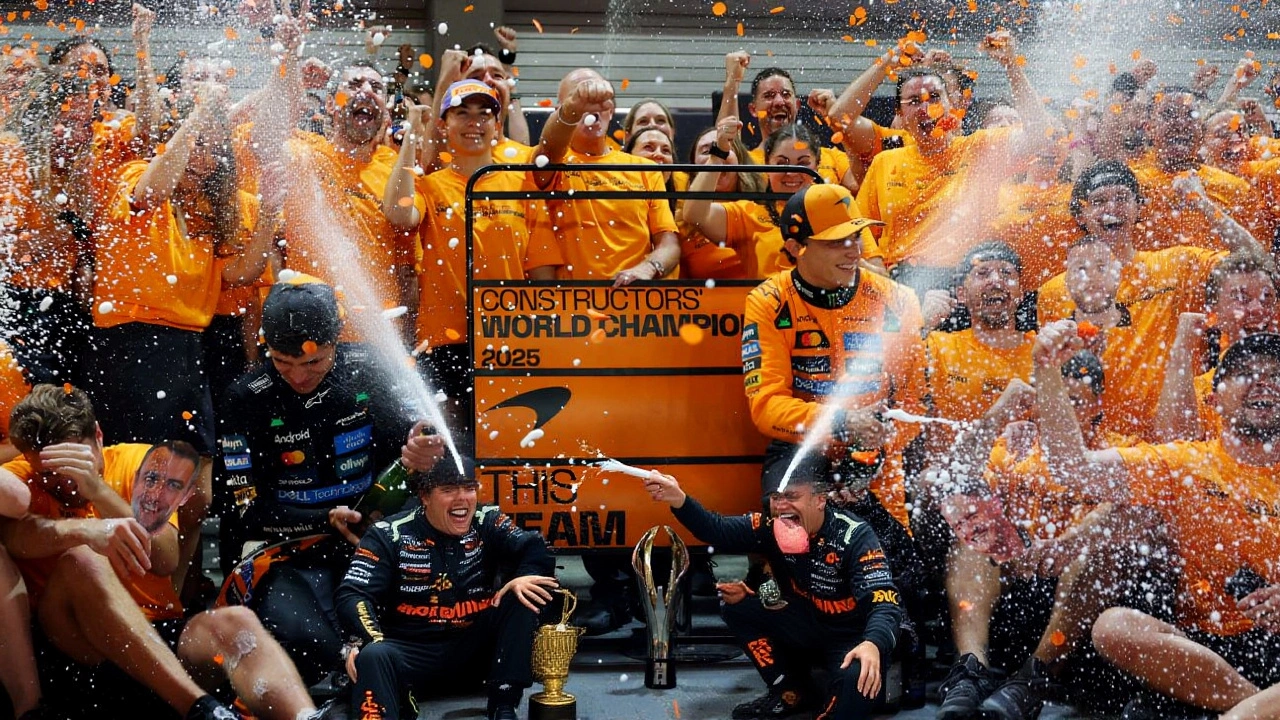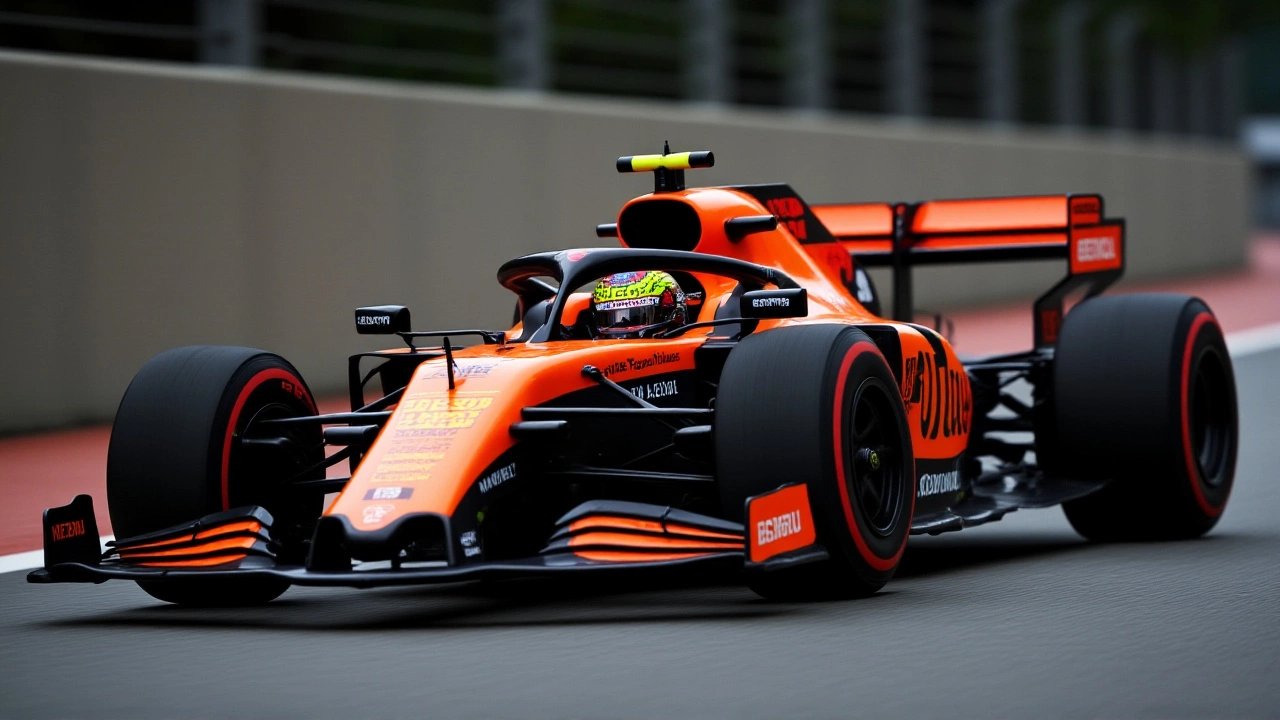When Max Verstappen, lead driver for Red Bull Racing topped Free Practice 3 at the 2025 Singapore Grand PrixMarina Bay Street Circuit, he stopped the clock at 1:30.148 – a whisker, just 0.017 seconds ahead of championship leader Oscar Piastri of McLaren. The margin was so fine the top five were tucked inside a single‑tenth of a second, turning the Singapore showdown into a true sprint for pole.
Why Singapore Is a Turning Point
The Singapore Grand Prix has always been a crucible for strategy. First introduced in 2008, the night race under the neon‑lit skyline forces drivers to juggle grip, heat and the ever‑present wall‑hugging corners. Over the years, the event has produced a parade of surprise winners – from Sebastian Vettel’s 2011 triumph to Charles Leclerc’s 2022 masterclass. This year, the stakes are amplified by a three‑way championship tussle between Red Bull, McLaren and Mercedes, making every practice minute count.
Historically, the fastest times in Singapore practice often foreshadow a pole‑position battle that spills into the race. In 2020, Hamilton’s pole after a blistering FP3 translated into a win, while in 2023 the pole sitter fell back after a tyre‑strategy gamble. The pattern suggests that whoever nails the 1:30‑plus range in FP3 usually carries that rhythm into qualifying.
FP3: Lap‑by‑Lap Drama
FP3 began at 14:00 local time, under the glow of the Marina Bay floodlights. Red Bull sent out Verstappen on the soft tyre – the Pirelli C5 compound – after a brief cool‑down lap. "The track felt like it was waking up," Verstappen told his engineers later. "Every corner gave a little more bite, but the grip was finally there."
Piastri answered on the next stint, also on the soft, shaving off just enough to sit 0.017 seconds behind. "I knew we could be within a few hundredths, but the pressure of the championship makes you push every meter," he quipped in post‑session remarks.
Mercedes’ George Russell slotted into third, his lap a steady 1:30.225, while rookie teammate Andrea Kimi Antonelli surprised many by carving out fourth on the same compound. McLaren’s veteran Lando Norris rounded out the top five, only 0.089 seconds off Verstappen’s benchmark.
The statistics speak for themselves: five drivers, three manufacturers, and a spread of 0.089 seconds. It’s the kind of spread you’d expect on a sprint track, not a street circuit famed for its unforgiving barriers.
Red Flags, Crashes and Investigations
The session wasn’t smooth sailing. Mid‑way through, a second‑generation red flag erupted when Liam Lawson of Racing Bulls clipped the wall at Turn 13, sending his car into a spin that stalled the track for three minutes. "We lost valuable data, but safety comes first," Racing Bulls team boss James Ross said after the incident.
Just as the session resumed, seven‑time champion Lewis Hamilton found himself under scrutiny. Officials opened an investigation into a possible red‑flag infringement after he drifted onto dust at Turn 1, prompting an extra preparation lap. Mercedes released a brief statement noting, "We’re cooperating fully and will address any procedural concerns after the session."
The double‑red‑flag scenario forced teams into a frantic scramble for tyre allocation, with Pirelli confirming that the softs were the only compound used during FP3.
Team Strategies and Tyre Choices
All front‑running teams converged on the soft tyre – a logical move given the short‑run nature of practice. Red Bull’s data engineer Alvaro Brun explained, "The soft gives us the peak grip we need to gauge one‑lap pace, but we’ll explore the medium in the race to manage tyre wear under the humid night conditions."
McLaren, meanwhile, hinted at testing a mixed‑compound run for the Sunday race. "We’ve seen the softs heat up quickly, so we’re looking at a medium‑soft split to preserve performance over 61 laps," said McLaren performance chief Rachel Brooks.
Mercedes stuck with the softs for the final run, banking on their superior tyre management in traffic. "Our drivers feel confident on the softs, and the data points to a strong qualifying set‑up," Russell added in a post‑session interview.

Implications for Qualifying
The razor‑thin gaps suggest qualifying will be a breath‑holding affair. Historically, the pole‑position time at Singapore hovers around the 1:28‑1:29 mark, but the softer compound and cooler night temperatures this year could shave another second off the fastest laps. If Verstappen’s FP3 rhythm translates, we could see a Red Bull‑McLaren duel for pole, with Mercedes lurking as a dark horse.
Analysts at Motorsport.com predict a “three‑way shoot‑out,” noting that "the data from the practice sessions shows no single team possessing a decisive advantage. It will come down to who nails the perfect traffic window and maximises tyre temperature on the final lap."
What’s Next: Sunday’s Race Outlook
After the practice wrap‑up, teams will fine‑tune their qualifying setups overnight. The Confederation Motorsport (FIA) confirmed that qualifying will kick off at 21:00 local time, following a 60‑minute session split into three parts. The pressure will be on to convert the narrow FP3 margins into a front‑row start.
Looking ahead, the championship narrative is already shaping up. Verstappen seeks to extend his lead, Piastri hopes to cement his title challenge, and Russell aims to keep Mercedes in the mix. If the practice trends hold, Singapore could serve as a pivotal swing point – a race where one fraction of a second decides the fate of the 2025 title race.
Expert Analysis
Former F1 engineer Mike Krack weighed in on the night‑time dynamics: "The street circuit’s lack of slip‑streaming means pure aerodynamic efficiency is less critical than absolute mechanical grip. Teams that have perfected their setup for the soft tyre will reap the reward in qualifying and the race."
Meanwhile, tyre specialist Michele Alboreto warned of potential degradation: "Even though the soft compound offers peak grip, the high corner loads at Marina Bay can cause a steep drop‑off after the first ten laps, so race‑day strategies will likely involve an early switch to the medium."
Frequently Asked Questions
How will Verstappen’s FP3 performance affect his chances for pole?
Verstappen’s 1:30.148 lap shows Red Bull has nailed the soft‑tyre setup, giving him a slight edge. If he can replicate that pace with clean traffic in qualifying, he stands a strong chance of starting from pole, especially since the gap to his rivals is under two‑tenths of a second.
Why was Liam Lawson’s crash significant for the session?
Lawson’s incident triggered the second red flag, cutting the practice window by about three minutes. That loss of time limited data collection for teams, forcing them to rely on earlier runs for tyre and aerodynamic mapping.
What tyre strategy are teams likely to adopt for the race?
Most teams used the soft compound in FP3, but they expect higher degradation under race conditions. Analysts expect a two‑stop strategy, starting on softs and switching to mediums mid‑race to balance grip and longevity.
Will Lewis Hamilton face any penalties for the alleged red‑flag infringement?
The FIA has opened an investigation, but historically such infractions result in a minor penalty, often a five‑second time addition or a reprimand. Hamilton’s team said they expect a quick resolution before qualifying.
How does the tight FP3 timing compare to previous Singapore weekends?
The 0.09‑second spread among the top five is the smallest since the 2019 Singapore GP, indicating an unusually competitive field. In 2022 the gap was around 0.25 seconds, so this year’s drivers are practically glued to each other's rear wheels.
